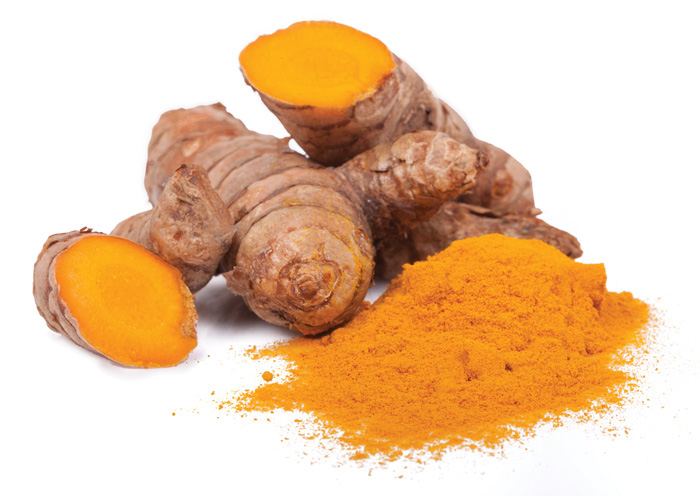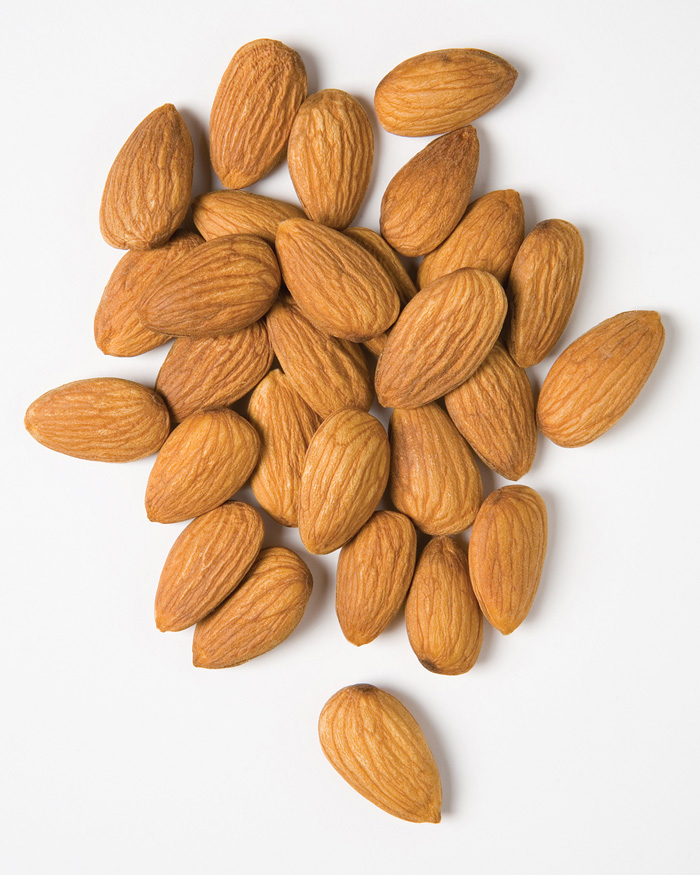Formulating to Foster Healthy Aging
NUTRACEUTICALS
Between 2015 and 2050, the proportion of the world’s population over 60 years old will nearly double from 12% to 22%, totaling around two billion, according to the World Health Organization. This demographic will continue to have an influence on the food industry as their wellness goals evolve. Anti-aging efforts used to focus on extending life expectancy, but today, anti-aging means living a longer, healthier, and active life. “Health and wellness are important for consumers throughout all life stages—after all, we all want to age well. However, data from HealthFocus International suggest that as we get older, our health and wellness priorities shift,” observes Pam Stauffer, global marketing programs manager at Cargill. “Consumers in their twenties tend to be most interested in immediate benefits—looking to foods and beverages that might help with daily stress or sleep. Older consumers (65-plus) have a longer view. For these shoppers, retaining cognitive health, mobility, and visual acumen rank higher.”
Information from the Office of Disease Prevention and Health Promotion states that aging adults experience higher risk of chronic disease. Approximately 80% of older adults have at least one chronic disease and 77% have at least two, including heart disease, cancer, chronic bronchitis or emphysema, stroke, diabetes mellitus, and Alzheimer’s disease. Older consumers are looking to prevent these diseases and issues as well as maintain active lifestyles. Here is a look at some of these areas and some of the ingredients that can potentially play a role in the growing anti-aging market.
Mobility
Muscle, joint, and bone health are critical for the 65 and older population as they affect mobility and risk of falls. This age group is at greater risk of osteoporosis (bone loss) and sarcopenia (age-related loss of skeletal muscle mass).
Nestlé Research scientists in partnership with the EpiGen Global Research Consortium, as part of a multicenter study called MEMOSA (Multi-Ethnic Molecular Determinants of Human Sarcopenia), are gaining new insights into the molecular mechanisms leading to sarcopenia. Migliavacca et al. (2019) compared muscle tissue from groups of older men with sarcopenia across different geographies. They found that irrespective of geographies, the dysfunction of mitochondria, the cellular organelle powering muscle fibers, is the strongest influencing factor leading to sarcopenia. The study also showed that people with sarcopenia have reduced levels of nicotinamide adenine dinucleotide (NAD+), a molecule critical for mitochondrial function. Nestlé is leading several complementary research programs aimed at the development of novel nutritional strategies to promote healthy muscle aging (Nestlé 2019).
In a survey of more than 1,900 U.S. grocery shoppers, Cargill found that one in four consumers said that more protein in the diet is always better, and at least six in 10 were at least somewhat likely to check the ingredient list for protein. “In general, protein has a strong health halo, with more than half of consumers reporting they seek protein for its health value and energy benefits, while nearly half also associate it with satiety and building muscle,” says Stauffer.
The U.S. Dairy Export Council has promoted whey protein as an excellent protein source to combat sarcopenia. Whey protein is high in branched-chain amino acids (leucine, isoleucine, and valine), which are important for muscle anabolism and tissue repair. In a published review, Liao et al. (2019) concluded that whey protein supplementation promotes muscle health in both humans and animals, suggesting that whey protein ingestion could be an effective means to prevent and counteract sarcopenia in healthy or unhealthy elderly people.
The National Osteoporosis Foundation reports that around 54 million adults over age 50 have low bone mass or osteoporosis, and almost all adults over age 80 have some form of osteoarthritis. Calcium and vitamin D are important nutrients to combat bone loss. It is recommended that women age 51 and over and men age 71 and older consume 1,200 mg of calcium daily. Both men and women age 50 and older need 800–1,000 IU of vitamin D daily.
In addition to nutrients consumed through food or supplements, other ingredients, like prebiotic fiber can help in the absorption of calcium. Holloway et al. (2007), for example, demonstrated the calcium absorption benefit that oligofructose-enriched inulin (Orafti Synergy1 from BENEO) had in postmenopausal women. “The mode of action here is that due to the particular type of fructan with short-chain and long-chain components, the fermentation process of the gut microflora is occurring throughout the length of the large intestine and not only in the proximal part,” explains Anke Sentko, vice president of regulatory affairs and nutrition communication at BENEO. “This creates an additional absorption surface together with an acidic environment due to the fermentation by the microbiota, which makes the calcium available for absorption.”
Jiang et al. (2014) demonstrated that collagen peptides are highly efficient at improving joint health. The researchers performed a prospective, randomized, double-blind, placebo-controlled study in elderly women with mild-to-moderate knee osteoarthritis. The results showed that the oral intake of collagen peptides (a daily dose of 8 g of Peptan from Rousselot) for a duration of six months significantly reduced joint pain and improved physical mobility. Peptan has also been shown to help maintain bone mineral density and thus prevent bone loss, stimulate bone formation, and inhibit bone breakdown.
Immunity
Immunity is one of today’s top health concerns, especially for the elderly, as their immune systems can weaken with age. A consumer survey by Kerry asked more than 11,000 consumers in 14 global markets about their reasons for buying healthy lifestyle products. Nearly two-thirds (63%) chose immune system support ahead of healthy bones and joints, good digestive health, improved energy levels, and heart health support. Interestingly, the research also revealed that 70% of the respondents believe breakfast is the best time for consuming products with immune health benefits.
Kerry offers Wellmune, a proprietary baker’s yeast beta 1.3/1.6 glucan that has been shown to help immune cells in the body move more quickly and recognize and destroy foreign challenges. Fuller et al. (2017) demonstrated that a daily dose of 250 mg of Wellmune protected against upper respiratory tract infections and reduced the duration of symptoms in older individuals (aged 50–70) once infected.
Probiotics help the immune system to function properly, restore the balance of the gut microbiome, and decrease risk of common infections. DuPont Nutrition & Biosciences offers HOWARU Protect Senior (Bifidobacterium lactis HN019), a proprietary probiotic formulation designed to provide immune enhancement for aging adults. Six clinical studies on HN019 showed it improves immune function by increasing phagocytic capacity, improving natural killer cell activity, increasing the number of bifidobacteria in the intestine of elderly persons, and improving colonic transit time.
Inflammation
Chronic inflammation is thought to be a major characteristic of aging, which may increase the need for anti-inflammatory ingredients and foods and beverages. Hruby et al. (2019) found that dietary protein, particularly from plant sources, may be associated with beneficial changes in the inflammatory burden in aging populations. The researchers assessed the responses to food frequency questionnaires that were given to 2,061 participants from the Framingham Heart Study Offspring cohort (mean ± SD age 60.0 ± 8.8 yr, 56% female). The results showed that protein intake was inversely associated with changes in the inflammation and oxidative stress score.
Turmeric has been used in India as a spice and medicinal herb in traditional ayurvedic medicine. It has anti-inflammatory and antioxidant properties and is currently used for anti-aging. Naturex in January announced that its TurmipureGold turmeric extract received self-affirmed GRAS designation under the conditions of intended use in a wide range of food categories. Its formulation enhances the bioavailability of curcuminoids, in addition to being instantly water dispersible. Curcuminoids support healthy joint function (including inflammatory response), normal bile production, and overall body function, contributing to healthy aging conditions.
Heart Health
The American Heart Association (AHA) estimates 43.7 million people aged 60 and older have one or more types of cardiovascular disease and reports that about two-thirds of cardiovascular disease deaths occur in people aged 75 and older.
The AHA recommends eating an overall healthy dietary pattern that emphasizes a variety of fruits and vegetables, whole grains, low-fat dairy products, skinless poultry and fish (containing omega-3 fatty acids), nuts and legumes, and non-tropical vegetable oils. Research continues to support heart-healthy benefits of these foods. For example, Maki et al. (2017) showed that long-chain omega-3 fatty acid supplementation is associated with a modest reduction in cardiac death. Walnuts, which are a rich source of alpha-linolenic acid, a plant-based omega-3, also contribute to a heart-healthy diet. Guasch-Ferré et al. (2018) demonstrated that incorporating walnuts into the diet improved blood lipid profile without adversely affecting body weight or blood pressure.
A recent study has hinted at the possible heart health benefits of tea. Wang et al. (2020) demonstrated that tea consumption was associated with reduced risks of atherosclerotic cardiovascular disease and all-cause mortality, especially among consistent habitual tea drinkers. The study included 100,902 Chinese adults from 15 provinces across China. The results taken after a median follow-up of 7.3 years showed that habitual tea drinkers had 1.41 years longer of atherosclerotic cardiovascular disease-free years and 1.26 years longer of life expectancy at the index age of 50 years.
Cognition and Vision
According to the National Council on Aging, one in four older adults experiences some mental disorder, including depression, anxiety, and dementia. Blueberries are a fruit that has been shown to possibly aid with cognition and memory issues. Miller et al. (2018) demonstrated that the addition of blueberries to the diets of older adults improved some aspects of cognition, including fewer repetition errors in a learning test. In the study, 13 men and 24 women between the ages of 60 and 75 years consumed either 24 g of freeze-dried blueberry/day (equivalent to 1 cup of fresh blueberries) or a blueberry placebo for 90 days.
Omega-3 fatty acids are said to possibly help in cognition and mental health. Some studies have shown omega-3 supplements to help in memory and prevent cognitive decline. Omega-3s have also been shown to reduce inflammation in the brain. In addition to the brain, omega-3 fatty acids have been shown to potentially benefit eye health.
A white paper from DSM discussed some studies highlighting the potential benefits of lutein, zeaxanthin, and omega-3s in maintaining eye health, particularly in age-related macular degeneration (AMD) (DSM 2018). AMD is a progressive eye disease and the main cause of blindness in people over the age of 50. In the United States, the number of people with AMD is expected to reach 5.4 million by 2050.
Liu et al. (2014) evaluated the effects of lutein and zeaxanthin on the visual function of test subjects with AMD in randomized controlled trials. The meta-analysis that the researchers conducted concluded that lutein and zeaxanthin supplementation is a safe strategy for improving visual performance of those with AMD, which mainly showed in a dose-response relationship.
Another study, the Age-Related Eye Disease Study 2 (AREDS2) found that intake of lutein and zeaxanthin led to an 18% reduction in the risk of progression to advanced AMD over a five-year period, as well as a significant reduction in the progression of cataracts.
Skin Health and Appearance
Rousselot reports that a clinical study demonstrated that oral supplementation with Peptan collagen peptides significantly contributed to improving the overall appearance of skin (Rousselot 2019). The research was conducted on 60 healthy Brazilian women, aged 45–60 years. The results showed significant improvements in the overall appearance of the skin, characterized by a decrease in periorbital wrinkles by 13% and nasolabial wrinkles by 10%, and a reduction of the visibility of pores in the region of the cheekbones in 57% of the subjects who received Peptan.
Almonds, a nut associated with heart health and weight management benefits, may help in wrinkle reduction, according to a pilot study funded by the Almond Board of California (Foolad et al. 2019). In this 16-week trial, 28 healthy postmenopausal women with Fitzpatrick skin type 1 or 2 (characterized by increased tendency to burn with sun exposure) were randomly assigned to receive 2 1-oz servings of either a nut-free snack or an almond snack per day. At the end of the study, photographic image analysis showed statistically significant improvements (wrinkle width decreased by 10% and wrinkle severity decreased by 9%) for the subjects who received the almond snack compared with those in the control group.
Next month’s Nutraceuticals section will discuss formulating foods with heart-healthy ingredients.
REFERENCES
DSM. 2018. The Future of Senior Healthcare: Nutritional Issues and Solutions for Healthy Aging. Health Benefit Solutions white paper, June. DSM Nutritional Products, Parsippany, N.J. dsm.com.
Foolad, N., A. R. Vaughn, I. Rybak, et al. 2019. “Prospective Randomized Controlled Pilot Study on the Effects of Almond Consumption on Skin Lipids and Wrinkles.” Phytotherapy Res. 33(12): 3212–3217.
Fuller, R., M. V. Moore, G. Lewith, et al. 2017. “Yeast-derived Beta-1,3/1,6 glucan, Upper Respiratory Tract Infection and Innate Immunity in Older Adults.” Nutrition. Vol. 39–40: 30–35.
Guasch-Ferré, M., J. Li, F. B. Hu, et al. 2018. “Effects of Walnut Consumption on Blood Lipids and Other Cardiovascular Risk Factors: An Updated Meta-analysis and Systematic Review of Controlled Trials.” Am. J. Clin. Nutr. 108(1): 174–187.
Holloway, L., S. Moynihan, S. A. Abrams, et al. 2007. “Effects of Oligofructose Enriched Inulin on Intestinal Absorption of Calcium and Magnesium and Bone Turnover Markers in Postmenopausal Women.” Br. J. Nutr. 97: 365–372.
Hruby, A., and P. F. Jacques. 2019. “Dietary Protein and Changes in Biomarkers of Inflammation and Oxidative Stress in the Framingham Heart Study Offspring Cohort.” Cur. Dev. Nutr. 3(5).
Jiang, J.-X., S. Yu, Q.-R. Huang, et al. 2014. “Collagen Peptides Improve Knee Osteoarthritis in Elderly Women: A 6-month Randomized, Double-blind, Placebo-controlled Study.” Agro Food Industry Hi Tech. 25(2): 19–23.
Liao, Y., Z. Peng, L. Chen, et al. 2019. “Prospective View for Whey Protein and/or Resistance Training Against Age-related Sarcopenia.” Aging Dis. 10(1): 157–173.
Liu, R., T. Wang, B. Zhang, et al. 2014. “Lutein and Zeaxanthin Supplementation and Association with Visual Function in Age-related Macular Degeneration.” Invest Ophthalmol. Vis. Sci. 56(1): 252–258.
Maki, K. C., O. M. Palacios, M. Bell, et al. 2017. “Use of Supplemental Long-chain Omega-3 Fatty Acids and Risk for Cardiac Death: An Updated Meta-analysis and Review of Research Gaps.” J. Clin. Lipidol. 11(5): 1152–1160.e2.
Migliavacca, E., S. K. H. Tay, H. P. Patel, et al. 2019. “Mitochondrial Oxidative Capacity and NAD+ Biosynthesis are Reduced in Human Sarcopenia Across Ethnicities.” Nat. Commun. 10(1): 5808.
Miller M. G., D. A. Hamilton, J. A. Joseph, et al. 2018. “Dietary Blueberry Improves Cognition Among Older Adults in a Randomized, Double-blind, Placebo-controlled Trial.” Eur. J. Nutr. 57(3): 1169–1180.
Nestlé. 2019. “How Do Healthy Aging and Muscle Health Work?” Press release, Dec. 20. Nestlé, Vevey, Switzerland. nestle.com.
Rousselot. 2019. “New Clinical Study Confirms Peptan Efficacy for Skin Beauty and Hair Strength.” Press Release, Sept. 3. Rousselot, Son, the Netherlands. rousselot.com.
Wang, X., F. Liu, J. Li, et al. 2020. “Tea Consumption and the Risk of Atherosclerotic Cardiovascular Disease and All-cause Mortality: The China-PAR Project.” Eur. J. Prev. Cardiol. Jan. 8. doi: 10.1177/2047487319894685.








